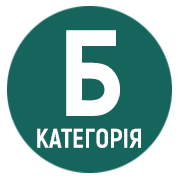THE SOVIET KYIV SOCIETY IN THE EXPANSE OF MEMORY (ILCHENKO O. “FOG PICKERS”, BATURYN S. “SHYZGHARA”)
DOI:
https://doi.org/10.31494/2412-933X-2019-1-9-52-58Keywords:
memory locations, soviet society, retro picture, everyday life, topos.Abstract
The peculiarities of the artistic representation of the Kyiv social environment during the Soviet period in Ilchenko`s “Fog Pickers” and Baturyn`s “Shyzghara” are being reviewed in the article. Based on discourse on the places of memory, Kyiv`s topos and the people`s place in it are characterized, the ideas of the authors – contemporaries in the reconstruction of memory are revealed, the role of comic means for exposing the Soviet Union is explained. The places of memory are regarded in the area of retro time which is filled with material things – landscape (buildings, streets, squares, parks, transport, ponds) and idealistic things (ideas, values, thoughts, personal relationships, family relationships, professional relationships, collective affairs, culture, art, traditions, service industry etc.). It is said that the authors of the books are focused on the locations related to their childhood and adolescence which evokes the most genuine feelings and confessions. In Ilchenko`s “Fog Pickers” and Baturyn`s “Shyzghara” Kyiv as the capital of Ukrainian Soviet Socialist Republic is represented by urban everyday life. It gives the opportunity to show the core of the Soviet everyday life when a person lives in order to endure, not for getting satisfied. The attention is drawn to the ideological representation of the ground with expressive details. The accommodation interior of the old intellectuals is shown by Ilchenko as a formation place of a reflective youth in the conditions of a total control. Author`s mastery in artistic and documentary representation of Kyiv streets, houses, parks, monumental structures is analyzed. According to Baturyn`s artistic vision of the world, the Soviet society is represented by young people who seek inner freedom, though they grow in conditions of a blinkered control. Places, where relationships between boys and girls were formed, are characterized. In Ilchenko`s and Baturyn`s works emotions and feelings are based on visual markers that are closely related to the experience. Both authors fill the time space of the Soviet past with irony, caricature, sarcasm. The representation of Kyiv`s places of interest activates associations that transform in a time stream and show the truths that are important for understanding of the present time.
References
Ассман А. Простори спогаду: Форми та трансформації культурної пам’яті / Аляйда Ассман; [пер. з нім. К. Дмитренко, Л. Доронічева, О. Юдін]. − К.: Ніка-Центр, 2014. − 440 с. – (Серія “Зміна парадигми”; Вип.15).
Батурин С. На форумі видавців презентую свій новий роман “Шизґара” [Електронний ресурс] Буквоїд http://bukvoid.com.ua/events/ukraine /2016/09/13/ 082814.html
Батурин С. Шизґара. [роман] / Сергій Батурин. − К.: Нора-Друк, 2016. – 206 с. – (Серія “Читацький клуб”).
Ільченко О. Збирачі туманів : Суб’єктивні нотатки з київського життя / Олесь Ільченко. − К.: КОМОРА, 2017. −176 с.
Набок С. Простір і пам’ять: на перехрестях контекстів / Світлана Набок // Наукові записки Інституту політичних і етнонаціональних досліджень ім. І. Ф. Кураса НАН України. – 2017. – Випуск 5−6(91−92). − С. 244–253. [Електронний ресурс]
http://ipiend.gov.ua/wp-content/uploads/2018/07/nabok _prostir.pdf
Нора П. Теперішнє, нація, пам’ять [пер. з фр. А. Рєпи] / П’єр Нора. – К.: ТОВ “Видавництво “КЛІО”, 2014. – 272 с.






